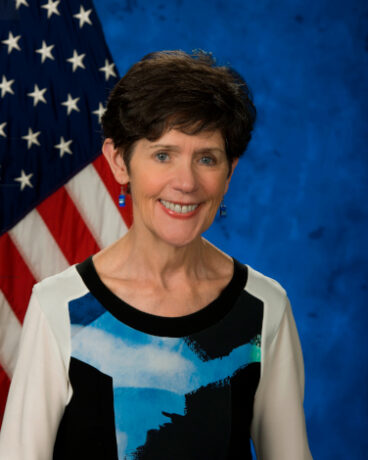Digital Quality Lessons from the Pandemic
July 26, 2022 · Andy Reynolds

Carolyn Clancy, Deputy Under Secretary for Discovery, Education and Affiliate Networks, Department of Veterans Affairs
When the doctor in charge of health care quality at one of the nation’s largest integrated health systems shared lessons learned during the pandemic about using digital technology to improve care, leaders eager to improve care at their own organizations listen.
That’s what happened July 12, when Carolyn Clancy, Deputy Under Secretary for Discovery, Education and Affiliate Networks at the U.S. Department of Veterans Affairs, gave the opening keynote at the 2022 Digital Quality Summit.
In one of the virtual conference’s best-attended sessions, Clancy explained the pandemic prompted her $129 billion agency to approach digital quality in four steps:
- Evaluate value dynamically.
- Obsess over human-centered design.
- Know where and when to scale.
- Build an ecosystem.
1) Evaluate Dynamically
Clancy noted that value is not static. It evolves and means different things for different patients.
Mainly, value is about making people healthy and how effectively health care produces health. “That statement is hardly new. But the explosion in digital capabilities makes it imperative to focus on this statement,” said Clancy.
2) Obsess Over Human-Centered Design
“Forcing emerging technology or solutions into a complex system, without understanding the perceived value for each individual actor in the system, is unlikely to lead to widespread adoption,” observed Clancy.
That’s why the VA has invested in collecting and analyzing patient experience data. This effort goes far beyond the Consumer Assessment of Healthcare Providers and Systems (CAHPS) survey. [Disclosure: NCQA certifies CAHPS survey vendors.] The VA focuses on collecting real-time “veteran signals.”
Now the VA is turning its human-centered focus on its own institutions. “Given our lack of constraints facing many private sector systems, it seemed clear that we had an opportunity to put human-centered design to work in helping us to reimagine veteran health care after the pandemic,” Clancy said.
The resulting plan, Reimagining Veteran Health, aims to:
- Identify opportunities for transformational change.
- Address critical changes in customer and employee needs and expectations.
- Uncover the current state of veteran health care.
3) Know Where and When to Scale
Risk prediction and artificial intelligence are two uses of digital technology that excite the VA. Widespread use of these technologies, especially during the pandemic, has led to data silos.
And where data silos exist, privacy protections limit the ability to use and share data.
To make data available to researchers and clinicians, the VA has invested in a cloud-based infrastructure. This approach democratizes data through novel solutions like synthetic data generation.
Clancy explained synthetic data are:
- Generated to mirror real-world information.
- Not linked to real people, events or circumstances.
- Reliable and accurate when based on trends in real data.
- Inclusive of all characteristics and health records, from blood pressure to vital signs to data from other digital applications.
“For those of you who have [built] distributed data networks, you know that one issue relates to coming up with a common data model. And then there are issues around how much data we can share. Synthetic data allows us to sail over that and focus on how we would use the data,” she said.
As an example, Clancy cited Mission Daybreak, a veteran suicide prevention program: “Clinical prediction based on mental health characteristics is vital and important, but they’re not the only factors that impact on suicide. It doesn’t really address social determinants of health, recent changes in social determinants of health, and so forth.”
Mission Daybreak will help the VA evaluate the ethical and equitable use of novel data sources. These include digital footprint data from active and passive collection methods.
[For NCQA’s thoughts on using novel data sources, see discussions of Electronic Clinical Data Systems (ECDS). ECDS has been a frequent focus of our Future of HEDIS webinar series.]
4) Build an Ecosystem
The fourth and final point in Dr. Clancy’s framework for harnessing what worked in the pandemic is to build an ecosystem.
“Health care is complicated. No one entity is going to solve all challenges. Investments in emerging technologies can be pricey and take years to return cost savings and improve health,” Clancy conceded.
This expense can be too much for smaller hospitals to bear. And these barriers can prevent patients in smaller markets from benefiting from novel solutions. “Our idea is building an ecosystem to enable multiple players, each with unique offerings and capabilities, to co-design or co-develop solutions,” she said.
Clancy went on to say that the VA thinks this approach can:
- Increase investments.
- Spread financial risk.
- Create diverse teams that drive scalable innovations.
One area ripe for innovation, Clancy said, is patient-reported outcomes. She suggested that collaboration between NCQA and HL7 could advance quality measurement. “We know how to measure patient-reported outcomes. I’m less convinced that we know how to do it easily and effectively and in a way that’s a seamless part of care delivery. If you think about all the technologies at our disposal, this could really change how we evaluate success.”
In closing, Clancy said, “If there’s one thing we’ve learned during the pandemic, it’s that health care has to be far more than transactional,” she said. “Yes, virtual solutions are great for transactional interactions, but there’s so much more to it than that. And the pandemic made us acutely aware of all the factors outside of health care that had a huge impact on the veterans that we serve.”







